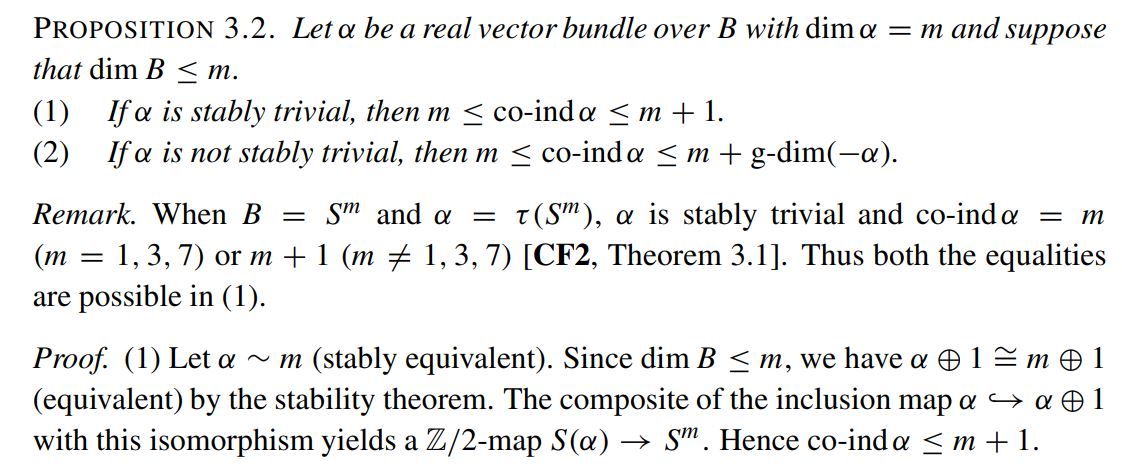I am going through this paper by Tanaka. In the proof of Proposition 3.2(1) given below
The author says that by the stability theorem as $\dim (B)\le m$ we have $\alpha\oplus1\cong m\oplus1$. But I can't figure that out, Since we are given that $\alpha $ and $m$ are stably equivalent we have that $\alpha\oplus k\cong m\oplus n$ for some trivial bundles $k,n$. Unfortunately, I can't figure that out.
I am using the stability theorem in Dale Husemoller's Fiber bundles book chapter 9.
kindly help. regards
